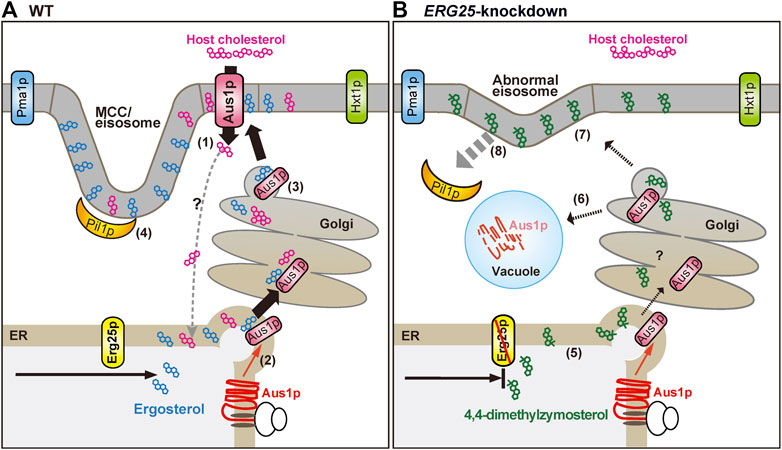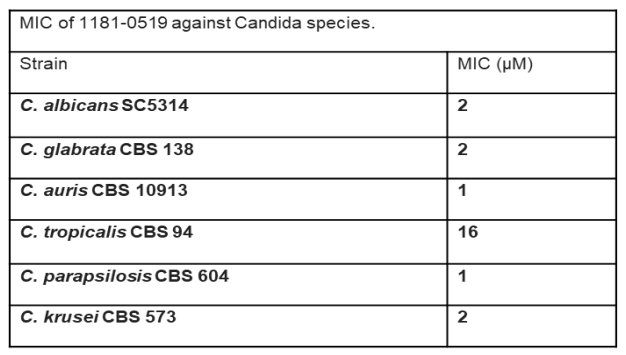Advantage and Core Benefit
- Resistant strains are unlikely to emerge due to targeting Candida ERD25 gene, which deficiency results in lethality.
- A novel mode of actin unlike azoles and other existing antifungal agents
- Drug efficacy and species selectivity evaluation system has been confirmed. Either way is available, lead optimization or new compound screening.
Background and Technology
There are a small variety of antifungal agents: azoles, which act by inhibiting ergosterol synthase, polyenes, which act directly on ergosterol, echinocandins, which inhibit cell wall synthases, and fluoropyrimidines, which inhibit nucleic acid synthesis. The emergence of resistant strains of fungi to all these systems has become a problem, and a new mechanism of action for antifungal drugs is required.
Inventors have shown that ERG25, an enzyme gene involved in the ergosterol synthesis pathway, plays an important role in cholesterol uptake and cell membrane structure in fungi (Figure). Knockdown of ERG25 in Candida glabrata prevented the plasma membrane localization of the sterol transport protein Aus1p and reduced the lethality of infected mice.
The antifungal activity of 1181-0519: N-[(2E)-2-[(4-nitrophenyl) hydrazinylidene] propyl] acetamide, a known inhibitor of sterol-C4-methyl monooxygenase encoded by ERG25, was evaluated. It showed antifungal activity (MIC) on the order of µM against several Candida species, including Candida auris. The results of 1181-0519 against knock-in yeast with human (hERG25) and Candida (CgERG25) forms of ERG25 showed no toxicity against yeast strains with the human form, strongly suggesting that ERG25 is also a target with few potential adverse effects。
 |
Data
- 1181-0519, an inhibitor of ERG25, showed strong inhibitory activity against C. albicans, C. glabrata, C. auris, C. parapsilosis, and C. krusei, with a minimum inhibitory concentration (MIC) below 2 μM (Table below)
- ERG25 identified as a killer gene of Candida glabrata as a target molecule with high fungicidal potential.
 |
Patent & Publication
Patent pending (unpublished)
https://doi.org/10.3390/jof9101035
https://doi.org/10.3389/fcell.2022.820675
Researcher
Dr. Hiroji Chibana (Medical Mycology Research Center, Chiba University)
Expectations
We look forward to collaborating with companies interested in developing a new class of antifungal drugs through joint research on derivative development using 1181-0519 as the basic compound and screening for inhibitors of ERG25.
Project.WL-04889


